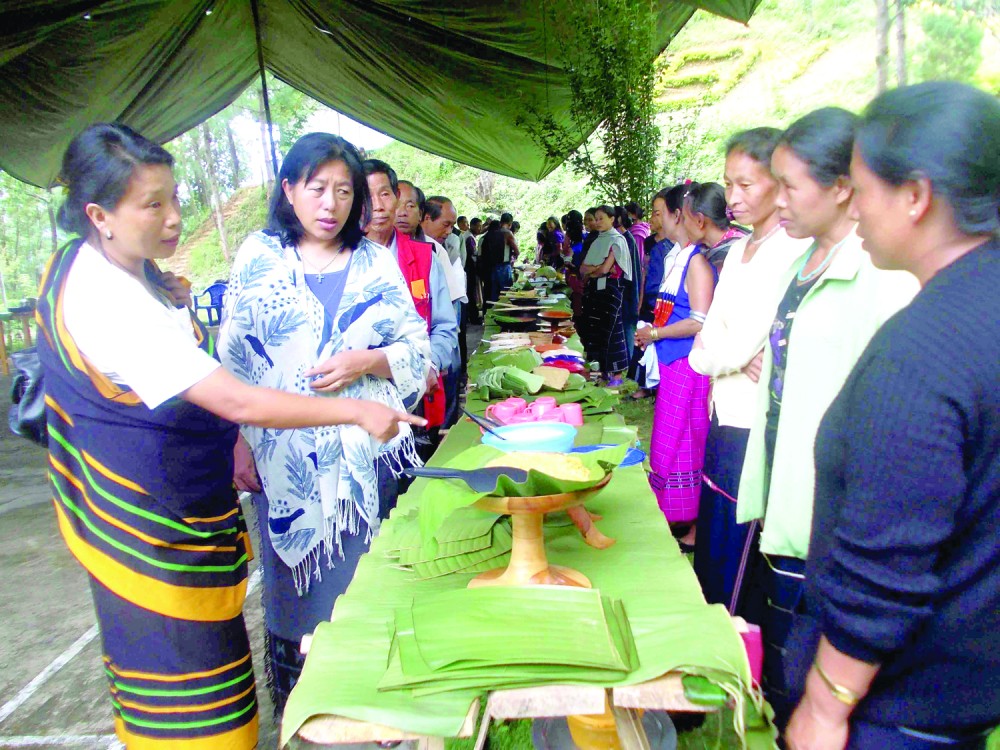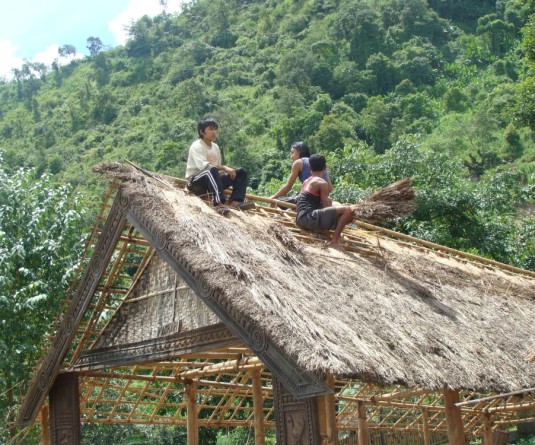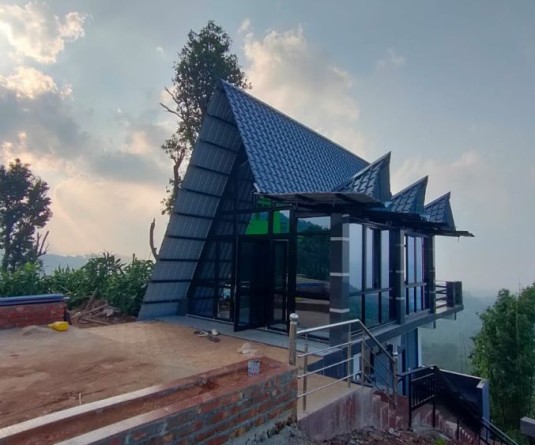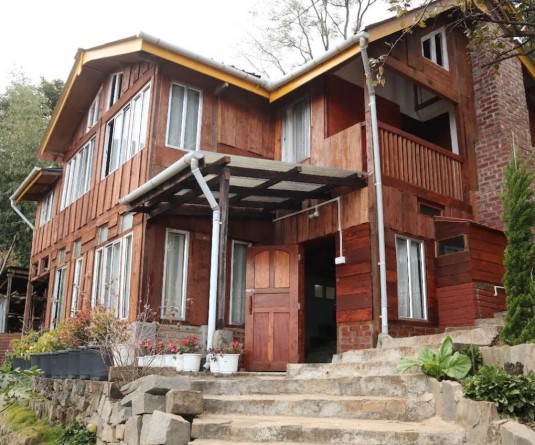Food competition being judged by Rongseninla, Dy. Director, Plant Protection, Directorate of Agriculture. (Photo by Aheli Moitra)

Aheli Moitra
Chizami | August 31
As women farmers from 11 villages across Nagaland came together in a unique moment in time, they cooked millet dishes on a common hearth under a shed in a village none of them had ever visited before. In fact, the women of Orangkong village in Longleng had to get permission from their Village Council to participate. The women from Noklak were on their 12-hour journey here when their Sumo tumbled down a hill, strangely hurting none of them. In spite of the shock, they made their way to Chizami instead of turning back so they don’t miss out on the first ever multi-community Millets Food Festival of Nagaland. As each of the participating teams cooked their millets, oblivious to the other’s language, they exchanged notes, sometimes in broken Nagamese, on recipes and grain variety.
In promoting food sovereignty in Nagaland, the North East Network (NEN), at their resource centre in Chizami, organized a Millets Food Festival on August 30, bringing together 120 farmers of Nagaland. Women farmers from Phek, Tuensang, Longleng and Kohima districts came together to exchange agro-knowledge, presenting to each other millets-based songs and dances. “Male participants often go to Dimapur or Kohima for agri-conferences but women farmers, who play a major role in agricultural production, rarely get an opportunity to share knowledge on agricultural systems, both traditional and the new methods they apply,” says Seno Tsühah, Programme Manager of NEN, in Chizami.
To understand the dwindling significance of millets among the Nagas, the organisation has not only conducted in-depth research in five villages, but also set up a communal Millets De-husking Machine at their Millets Resource Centre that can be accessed by anyone interested. Considered difficult to de-husk, the consumption of millets has been on a downward spiral in Nagaland, with mainstream psychology playing its part in promoting rice over the coarse grain once considered a “poor man’s crop”.
Going by the excitement shown by farmers, making the de-husking technology available to communities will increase the popularity of millets and decrease the additional workload on women.
A large number of seed variants continue to exist on the Nagascape. The Poumai speaking Chakhesang people of Zelome village in Phek district, for instance, exhibited 11 varieties of millets at the Festival, with one distinct variety that their forefathers had brought decades ago from Myanmar and named ‘Barmesuthu’. This they exchanged with Chizami village for mustard and chilli seeds. Similarly, in a move that will sow the seeds of an agri-based Naga sisterhood and promote Naga millet diversity, Thetsumi exchanged seeds with New Phor, Mesulumi with Orangkong, Enhulumi with Noklak and Sumi with Phenwhenyu.
“We are grateful for this festival as it gives us incentives to bring back our healthy heritage of millets that is disappearing for no good reason,” said Pastor R.W. Ayitu of New Phor villagewho accompanied 10 women farmers to Chizami in a Tata Mobile truck. In his speech to the audience, the Pastor highlighted how some variety of millets could be stored up to 50 years, or more, without rotting if properly taken care of. Unlike predominant variants of rice, this wonder grain has numerous nutrients, is resistant to drought and is cultivated amidst a rich biodiversity of crops found in the jhum pattern of agriculture. “Sidelining agriculture and increasing dependence on food from markets of Dimapur is making our people extremely poor,” says Ayitu. The Pochury village of New Phor is located on the far east of Phek, near Mount Saramati, with its people well marginalized from the politics and economics of Nagaland.
In Noklak, different types of millets are grown on a large scale, replacing Cerelac for children, helping treat leprosy in cattle and keeping human population healthy. “The only disadvantage is that millets are extremely hard, and time consuming, to process,” says Chongtei Lüshing whose team from Noklak was not only extremely proficient with millets but also interested in following the example of Chizami in setting up a Millets Processing Machine of their own.
“Multinational companies have infiltrated the Indian agricultural community, especially seed sectors, over the past decade and farmers are unable to resist. Food, and its production, should be under the control of local farmers not international markets; the Nagas have to be food sovereign,” says Tsühah. Her team’s work, over the past 12 years, has helped set up seed banks in various villages controlled by women from the village, promoting the preservation of a number of indigenous seed varieties.“It is our duty to protect our biodiversity and natural resources,” she calmly reminds her farmer audience.
The festival was attended by Dy. Director of Plant Protection of the Directorate of Agriculture of Nagaland, Rongseninla, who was extremely pleased about the initiative to promote a crop that adapts much better than paddy to climate change. “The mission of our department is to ensure food for all and millets are the way to go,” she remarked. The Phek District Farmers’ Union and others from neighboring villages also attended the festival.
For more information on millets, visit www.milletindia.org






